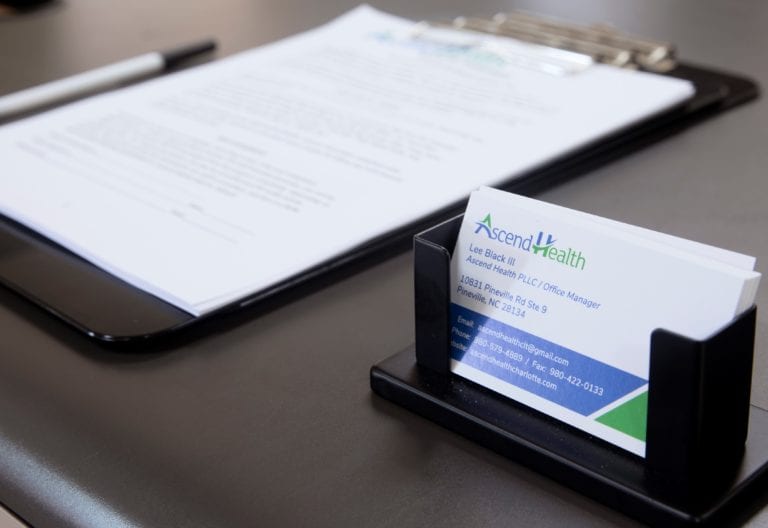Understanding Medication-Assisted Treatment (MAT)
Medication-Assisted Treatment (MAT) is a highly effective approach for treating addiction use disorder, especially opioid use disorder (OUD). It combines the use of medications, such as methadone, buprenorphine, and naltrexone, with counseling and behavioral therapies to provide a comprehensive treatment approach.
What is Medication-Assisted Treatment (MAT)?
Medication-Assisted Treatment (MAT) is an evidence-based treatment method that utilizes medications approved by the FDA to safely and effectively treat opioid use disorder (OUD). These medications, including methadone, buprenorphine, and naltrexone, are prescribed as part of long-term treatment plans to improve the health and well-being of individuals living with OUD (NACo).
MAT is recommended as the standard of care for patients with OUD by organizations such as the World Health Organization (WHO), the National Institute on Drug Abuse (NIDA), and the Substance Abuse and Mental Health Services Administration (SAMHSA). By combining medication with counseling and behavioral therapies, MAT addresses the complex nature of addiction and provides a comprehensive approach to treatment.
Benefits of Medication-Assisted Treatment (MAT)
Medication-Assisted Treatment (MAT) offers several benefits for individuals with addiction use disorder:
- Reduction in Drug Use and Overdose Deaths: MAT has been shown to reduce opioid overdose deaths by 40-60% and is effective in helping individuals reduce or stop their opioid use. By providing access to appropriate medications, MAT helps individuals manage their cravings and break the cycle of addiction.
- Increased Treatment Retention: Studies have demonstrated that MAT improves treatment retention rates, increasing the likelihood of successful recovery. The combination of medications and behavioral therapies supports individuals throughout their recovery journey, enhancing their engagement in treatment.
- Improving Overall Health and Functioning: Medications used in MAT, such as methadone, buprenorphine, and naltrexone, help to normalize brain chemistry, reduce cravings, and block the effects of opioids. This not only aids in reducing drug use but also improves overall health and functioning. MAT can lead to improvements in physical health, mental well-being, and social functioning.
MAT has proven to be an effective approach for treating addiction use disorder, particularly opioid use disorder. It offers numerous benefits, including reduced drug use, decreased overdose deaths, increased treatment retention, and improved overall health and functioning. By combining medications with counseling and behavioral therapies, MAT provides a comprehensive and individualized treatment approach to support individuals on their path to recovery.
Medications Used in MAT for Addiction Use Disorder Treatment
Medication-Assisted Treatment (MAT) is an evidence-based approach for treating addiction use disorder (AUD) that combines medications with counseling and behavioral therapies. The FDA has approved three medications, methadone, buprenorphine, and naltrexone, as effective treatments for opioid use disorder (OUD) (NACo). These medications play a crucial role in improving the health and well-being of individuals living with OUD.
Methadone
Methadone is a long-acting opioid agonist that helps reduce cravings and withdrawal symptoms associated with OUD. It works by binding to the same receptors in the brain that are activated by opioids, thereby preventing withdrawal symptoms and reducing the desire to use opioids. Methadone is administered orally and its effects can last for up to 24 to 36 hours. It is typically provided through specialized opioid treatment programs.
Buprenorphine
Buprenorphine is a partial opioid agonist that also helps alleviate cravings and withdrawal symptoms. It works by binding to the same receptors as opioids but produces a weaker effect, making it less likely to be misused. Buprenorphine can be prescribed by qualified healthcare providers and is available in various forms, including sublingual tablets, buccal films, or extended-release injections. The duration of its effects can vary depending on the formulation used.
Naltrexone
Naltrexone is an opioid antagonist that blocks the effects of opioids in the body. Unlike methadone and buprenorphine, it does not produce any opioid-like effects or alleviate withdrawal symptoms. Naltrexone is available in oral and injectable forms. The oral form is taken daily, while the extended-release injectable form, known as Vivitrol, is administered once a month. Naltrexone is typically used in individuals who have already detoxed from opioids and are motivated to remain abstinent (NACo).
These medications used in MAT for addiction use disorder treatment are crucial components of comprehensive care. Combined with counseling and behavioral therapies, they provide a holistic approach to addressing OUD. It’s important to note that the choice of medication should be based on individual needs, preferences, and the guidance of a healthcare professional. The effectiveness of MAT in reducing opioid use, overdose deaths, and improving overall health and functioning has been widely recognized by organizations such as the World Health Organization (WHO), the National Institute on Drug Abuse (NIDA), and the Substance Abuse and Mental Health Services Administration (SAMHSA) (source).
How Medication-Assisted Treatment (MAT) Helps Improve Mental Health
Medication-Assisted Treatment (MAT) is an evidence-based approach that combines medications with counseling and behavioral therapies to address addiction use disorder. MAT has been shown to provide numerous benefits for individuals seeking recovery and can significantly improve mental health outcomes. Here, we will explore three key ways in which MAT helps improve mental health: reducing opioid cravings, managing withdrawal symptoms, and normalizing brain chemistry.
Reducing Opioid Cravings
One of the primary benefits of MAT is its ability to reduce opioid cravings. Medications such as methadone, buprenorphine, and naltrexone, which are commonly used in MAT, target the brain’s opioid receptors to alleviate cravings and lessen the desire to use opioids (NACo). By reducing cravings, individuals are better able to focus on their recovery journey and engage in the necessary counseling and behavioral therapies to address the root causes of their addiction.
Managing Withdrawal Symptoms
Withdrawal symptoms can be a significant barrier to recovery, often leading individuals to return to opioid use. However, medications used in MAT, such as methadone and buprenorphine, work by preventing or minimizing withdrawal symptoms, allowing individuals to transition to a stable and controlled state. This not only improves their overall well-being but also enables them to fully participate in therapy and develop the necessary coping skills for long-term recovery.
Normalizing Brain Chemistry
Opioid use disorder can disrupt the brain’s natural chemistry, leading to imbalances and dysregulation. One of the goals of MAT is to help normalize brain chemistry by utilizing medications like methadone, buprenorphine, and naltrexone. Methadone and buprenorphine, which are opioid agonists, can help restore balance by activating the brain’s opioid receptors, thereby reducing cravings and withdrawal symptoms. On the other hand, naltrexone, an opioid antagonist, blocks the effects of opioids in the body, preventing their euphoric and addictive properties (New Choices Treatment Centers). By normalizing brain chemistry, individuals can experience improved mental health and a greater ability to focus on their recovery journey.
Through its multifaceted approach, Medication-Assisted Treatment (MAT) provides individuals with addiction use disorder the necessary support to address their mental health needs. By reducing opioid cravings, managing withdrawal symptoms, and normalizing brain chemistry, MAT plays a crucial role in improving mental health outcomes for individuals in recovery. It is important to note that MAT should always be accompanied by counseling and behavioral therapies for a comprehensive approach to treatment.
The Effectiveness of Medication-Assisted Treatment (MAT)
Medication-Assisted Treatment (MAT) has proven to be highly effective in addressing opioid use disorder (OUD) and improving patient outcomes. This section will explore some key areas where MAT has demonstrated its effectiveness: reduction in drug use and overdose deaths, increased treatment retention, and improvement in overall health and functioning.
Reduction in Drug Use and Overdose Deaths
MAT has been shown to significantly reduce drug use and decrease the risk of overdose deaths. Research has indicated that MAT can reduce opioid overdose deaths by approximately 40-60% (source). By utilizing U.S. Food and Drug Administration (FDA) approved medications such as methadone, buprenorphine, and extended-release naltrexone, individuals undergoing MAT receive the necessary support to manage their opioid use disorder and minimize the risk of relapse and subsequent drug-related harm.
Increased Treatment Retention
One of the key benefits of MAT is the increased likelihood of treatment retention. Studies have consistently shown that individuals who engage in MAT tend to remain in treatment for longer periods compared to those who receive non-medication-based interventions alone (SAMHSA). Long-term retention on medication for OUD has been associated with improved outcomes, highlighting the importance of MAT as a comprehensive treatment approach (NCBI Bookshelf).
Improving Overall Health and Functioning
MAT not only addresses the specific challenges of opioid use disorder but also has a positive impact on overall health and functioning. It has been shown to reduce the risk of HIV and hepatitis C infection, as individuals receiving MAT are less likely to engage in high-risk behaviors associated with drug use. Furthermore, MAT can lead to improvements in physical and mental health, social functioning, and productivity, enabling individuals to regain control over their lives and reintegrate into society.
In summary, medication-assisted treatment (MAT) has proven to be an effective approach in the treatment of opioid use disorder (OUD). It has shown significant success in reducing drug use and overdose deaths, increasing treatment retention, and improving overall health and functioning. By utilizing FDA-approved medications and comprehensive treatment plans, MAT provides individuals with the support they need to recover and lead fulfilling lives.
Comprehensive Approach to Addiction Use Disorder Treatment
When it comes to treating addiction use disorder, a comprehensive approach that combines medication-assisted treatment (MAT) with counseling and behavioral therapies has shown great promise in improving mental health, behavioral health, and emotional well-being. Let’s explore the key components of this comprehensive approach.
Counseling and Behavioral Therapies
Counseling and behavioral therapies play a vital role in addiction use disorder treatment. These therapies help individuals gain insights into their thoughts, emotions, and behaviors related to substance use. They provide essential tools and strategies to cope with triggers, develop healthier coping mechanisms, and build a strong support system.
Through counseling, individuals can address underlying psychological issues that may contribute to substance use. Behavioral therapies, such as cognitive-behavioral therapy (CBT), motivational interviewing (MI), and contingency management, focus on modifying behavior patterns and reinforcing positive changes. These evidence-based therapies aim to enhance self-awareness, motivation, and decision-making skills, promoting long-term recovery and improved mental well-being.
Individualized Treatment Plans
Each person’s journey through addiction use disorder is unique, and therefore, treatment plans should be tailored to individual needs. A comprehensive approach recognizes the importance of individualized treatment plans that consider factors such as the severity of addiction, co-occurring mental health disorders, and personal circumstances.
A thorough assessment is conducted to determine the appropriate combination of medications and therapies for each individual. This ensures that treatment aligns with specific needs and goals, maximizing the chances of successful recovery. Individualized treatment plans also allow for ongoing evaluation and adjustment as progress is made, ensuring that the treatment remains effective and relevant throughout the recovery process.
Importance of Treatment Retention and Duration
Research shows that positive outcomes in addiction use disorder treatment are strongly correlated with treatment retention and duration (Source). The longer an individual stays engaged in treatment, the greater the likelihood of achieving sustained recovery and improved overall well-being. Therefore, it is crucial to emphasize the importance of treatment retention and duration.
Treatment programs that offer comprehensive medication-assisted treatment, counseling, and behavioral therapies provide individuals with the necessary support and resources to maintain their recovery journey. By addressing the physical, psychological, and behavioral aspects of addiction, these programs help individuals build a solid foundation for long-term sobriety and improved mental health.
In conclusion, a comprehensive approach to addiction use disorder treatment involves integrating medication-assisted treatment with counseling and behavioral therapies. By combining these components, individuals can benefit from a holistic approach that addresses both the physical and psychological aspects of addiction. Emphasizing individualized treatment plans and the importance of treatment retention and duration further enhances the effectiveness of the comprehensive approach, promoting better mental health, behavioral health, and emotional well-being for those seeking recovery.
Access to Medication-Assisted Treatment (MAT)
Access to medication-assisted treatment (MAT) is crucial for addressing the opioid crisis and improving outcomes for individuals with opioid use disorder (OUD). However, despite the proven benefits of MAT, there are still barriers that limit access to these life-saving treatments. In this section, we will explore the barriers to MAT access and discuss efforts to address the opioid crisis and expand the availability of MAT prescribers.
Barriers to MAT Access
While MAT is an effective approach for the treatment of substance use disorders, including OUD, there are several barriers that hinder access to these treatments. Some of the common barriers include:
- Stigma: Stigma associated with addiction can prevent individuals from seeking MAT and can also affect the attitudes of healthcare providers, limiting the availability of MAT options.
- Lack of Provider Training: Many healthcare providers have limited knowledge and training in MAT, which can result in a lack of confidence in prescribing these medications. This shortage of trained providers contributes to limited access to MAT.
- Limited Availability of MAT Prescribers: The availability of MAT prescribers, such as physicians who can prescribe buprenorphine, is often limited in many parts of the United States. This scarcity of prescribers creates a significant barrier to accessing these medications.
- Insurance Coverage: Inadequate insurance coverage or lack of coverage for MAT can make it difficult for individuals to afford these treatments. High out-of-pocket costs can create financial barriers, preventing individuals from accessing the medications they need.
Addressing these barriers is crucial to improving access to MAT and ensuring that individuals with OUD have the opportunity to benefit from these evidence-based treatments.
Addressing the Opioid Crisis
Expanding access to MAT is a key component of addressing the ongoing opioid crisis. MAT has been proven to be effective in reducing opioid use, overdose deaths, and improving overall health and functioning (SAMHSA). It can help stabilize individuals with OUD, reduce cravings, and increase treatment retention, leading to better long-term outcomes.
Efforts to address the opioid crisis include:
- Increasing Awareness and Education: Raising awareness about the benefits of MAT and providing education to both healthcare providers and the general public can help reduce stigma and increase acceptance of these treatments.
- Policy Changes: Implementing policy changes at the local, state, and national levels can help remove barriers to MAT access. This includes expanding insurance coverage for MAT, increasing funding for treatment programs, and promoting the integration of MAT into healthcare systems.
Expanding Availability of MAT Prescribers
To improve access to MAT, there is a need to expand the availability of MAT prescribers. This involves increasing the number of healthcare providers who are trained and certified to prescribe medications such as buprenorphine. Efforts to expand the availability of MAT prescribers include:
- Training and Education Programs: Providing training programs and resources to healthcare providers to increase their knowledge and confidence in prescribing MAT medications.
- Removing Regulatory Barriers: Streamlining the process for healthcare providers to become certified to prescribe MAT medications, reducing administrative burdens, and addressing regulatory barriers can help increase the number of prescribers.
- Incentives and Support: Offering financial incentives, loan forgiveness programs, and other forms of support to healthcare providers who choose to become MAT prescribers can help attract more professionals to this field.
By addressing the barriers to MAT access and expanding the availability of MAT prescribers, we can improve the reach and impact of these life-saving treatments, ultimately helping individuals with OUD to achieve successful recovery and better overall health outcomes.



